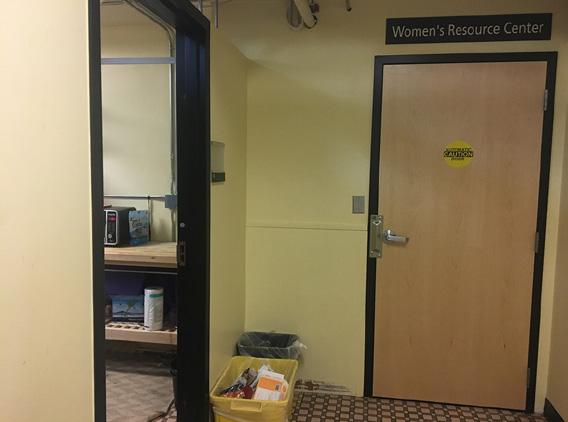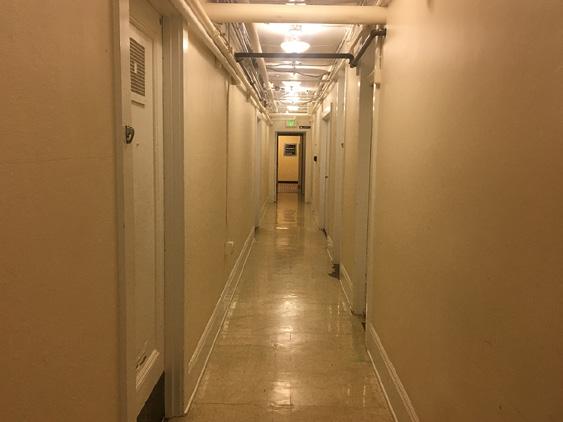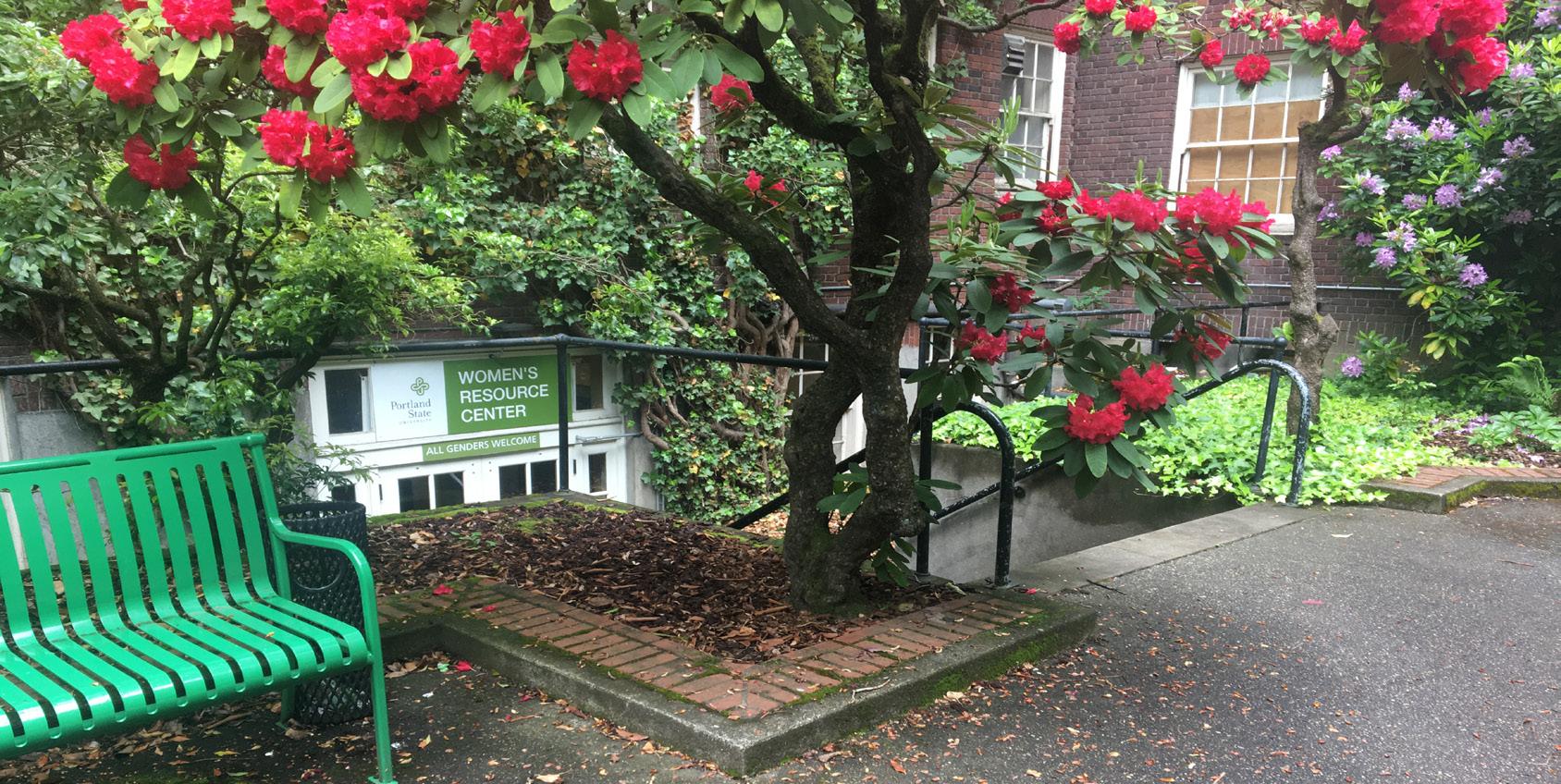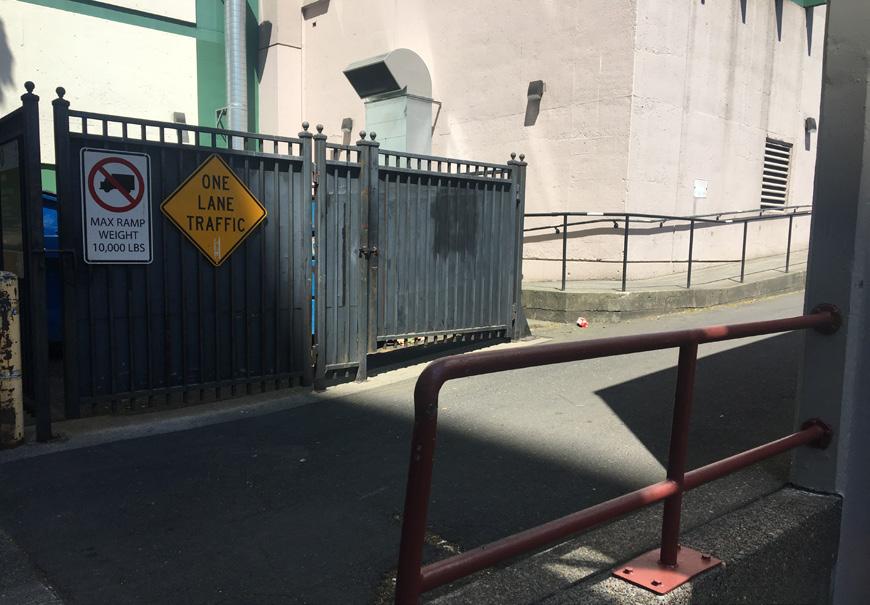
7 minute read
Resource Centers Reunited
Resource Centers Reunited current paths to accessibility for the Women's Resource Center The Women's Resource Center's long-awaited move into SMSU

Advertisement




article and photos by Hanna Anderson
After a lengthy process of requests to the Space Allocation Committee, the Women’s Resource Center has been approved to move into the Smith Memorial Student Union.
The Women’s Resource Center, otherwise known as the WRC, has faced numerous problems with their current location in the basement of Montgomery building. It has stood out as one of only a couple of student resource centers not housed in the Student Union.
However, in their last meeting in November 2018, Portland State’s Space Allocation Committee (SAC) approved the WRC’s request to move into the student union. The WRC will replace the Quiet Study lounge on the fourth floor of Smith to sit alongside other spaces like the Queer Resource Center, Veterans Resource Center, and the Resource Center for Students with Children.
In February, legislation was introduced to ASPSU Senate to halt the WRC move to save the Quiet Study lounge. But without a motion to move the legislation to a vote, the resolution failed.
In their meeting summary, SAC wrote of their decision: “WRC’s current allocation creates significant wayfinding, security, confidentiality, and accessibility challenges, which negatively impacts WRC operations and students. The allocation would place the WRC in a more visible location on campus, the WRC would be adjacent to...associate student resource centers, [and] individuals with mobility devices would have direct access to SMSU elevators.”
Erica Bestpitch, the director of the WRC, believes the move to the Student Union will help the WRC serve more students, work with the other student centers, and ultimately give the WRC a “stronger presence in our community.”
“The Women's Resource Center is a student resource center, and we wanted to be in proximity to all of our sibling centers,” Bestpitch explained. “Because we are really the only student resource center not housed in Smith, we have also noticed wayfinding has been a challenge for many. Often times, students, faculty and administrators who have been at PSU for a long time will have never set foot in the WRC. Because we are so far off the beaten path that some can forget to include our space in tours of campus.”
One of the primary reasons for the move, Bestpitch explained, is accessibility. For able-bodied students, accessing the WRC is as easy as walking down the stairs that leads directly to their front door. For those who cannot walk down the stairs, their website has a page set aside with instructions for how to enter their space: “Enter through the main door to the Montgomery Building and take the elevator down to the basement. Once in the basement follow the sign forward and turn left. Follow the hallway down and take another left. This places you at the back of our department by our bathroom and kitchen. Enter through the back door.”
But even this winding pathway doesn’t ensure access. “Montgomery is a historic building and their elevators are not big enough to ensure access for all kinds of mobility devices,” Bestpitch explained. “We have been really concerned for the past several years that our service to students has not been equitable because there are students who can not physically access our location.” “The process of finding a new location on campus and then securing that location has been a long one.” said Bestpitch, “It has definitely taken perseverance and patience, and the participation and support of many on-campus colleagues, the mobilization of student voices, and the support of administration to make the WRC accessible to all students on campus.”
Campus Accessibility: Room for Improvement



article and photos by Hanna Anderson
For able-bodied students at Portland State University, the accessibility of campus is not often thought of, as they’re only faced with it for seconds of a day. It’s simply a matter of stepping through a door frame. In the case of stairs, they add only more seconds, at worst.
For others, however, a lack of accessibility on campus is an obstacle. Avoiding stairs leads to literal mazes to find where the wheelchair accessible entrance of a building is, such as the case of the Montgomery basement. Other places—like Ondine—tuck such entrances away to the back of buildings, next to, in its case, the dumpsters. Then there is the Robertson Life Sciences Building, with it’s especially long ramp nearly the length of the building, gracing its front.
Each problem may be small on its own, but the constant accumulation of all of these problems adds up quickly, until they create a campus that a number of students physically can not attend. The issue extends beyond stairs and ramps: furniture, doorways, nearly every aspect of a classroom can contribute to the issue.
“More access is more inclusion, and it’s beneficial for everyone,” said Jen Dugger, the Director of Portland State’s Disability Resource center, “You don’t have to have a disability to benefit from an accessible campus.”
As a public college Portland State University is required by law to be compliant with the Americans with Disabilities Act—better known as the ADA, and a basic standard for creating accessible spaces. Becoming law in 1990, the ADA prohibits discrimination on the basis of disability, requires that employers make reasonable accommodations, and requires that buildings be physically accessible up to its standards.
“The ADA gave us specific guidelines for what physical accessibility looks like,” explained Dugger. “Like doorways have to be 32 inches wide— we didn’t have that before 1990. So there’s a lot of work to do in buildings (built) prior to that. In the 70s, we got our first piece of disability legislation, very first. That was section 504 of the rehabilitation act. And prior to that, if buildings were built prior to that, they could be inaccessible...So we’re not alone, we’re always going to be dealing with those buildings that were built prior to that date in the 70s. What you might see on campus is some weird combination of super accessibility and (buildings that are) not accessible at all.”
Dugger is also Co-Chair of PSU’s Accessibility Committee, dedicated to improving the accessibility of the campus as a whole. The committee works on multiple projects throughout the year. Last year’s achievements included elevator upgrades for Cramer Hall and Parking Structure One, as well as the addition of an elevator in Parkmill.
“We are a campuswide group that meets monthly during the academic year,” said Sarah Kenney, another Co-Chair of the committee. “We advocate for equity through universal design and discuss and promote ways that we can make our campus a truly accessible place to study, work and live.”
While PSU’s campus is ADA compliant, the committee’s goals are to raise the standards even higher than before.
Renovation and new construction projects on campus are handled by the Capital Projects and Construction department, which the Accessibility Committee has been working with to implement what are known as Universal Design Standards.
“For example, the accessibility standards from the ADA say that a building—a building now, in 2019—has to have an accessible entrance, period,” Dugger explained. “But that entrance can technically be around the back of the building, next to a dumpster, and that’s perfectly compliant. But these new UD standards would basically say, that entrance around the back of the building is not up to code with PSU standards. So we would want it to be (that) the most used entrance would be the most accessible. And hopefully, all the entrances.”
Throughout the interview, the underlying cause of these accessibility issues couldn’t be avoided: The topic of ableism. Ableism is the discrimination against those with disabilities, in favor of those who are able bodied. Like other forms of discrimination, it has been a part of a long history in America that can seep into nearly every aspect of life; like whether or not somebody can find the ADA entrance, or if buildings have one at all, while those with able-bodied privilege don’t have to spare it a second thought.
“Accessibility is everybody’s responsibility,” Dugger Said. “We all create and maintain space. You don’t have to be an architect to do that, or a construction worker, and I think that we forget that sometimes—that we need to be thinking about other people who might join us in whether or not they might have full opportunity to participate or enjoy whatever it is we’re doing. When we think about planning something, we should be thinking about planning for the most inclusive event possible.”










